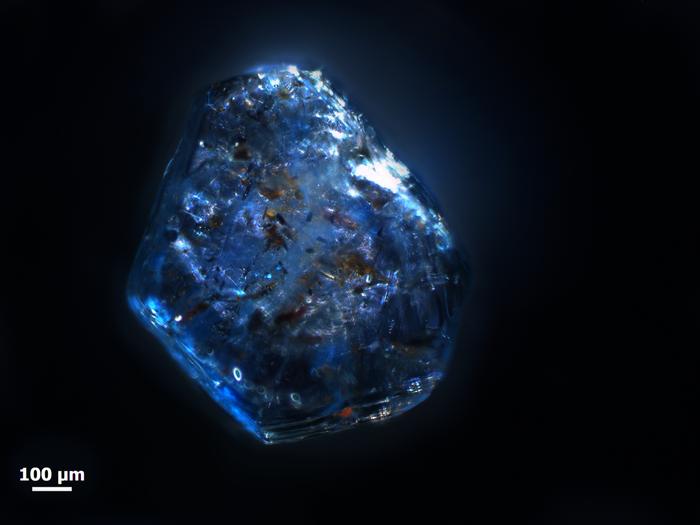Sapphires, like many precious gemstones, are formed in the bowels of Earth’s crust, cooked up by immense pressure and intense heat. However, the exact recipe for the stunning blue crystals has previously escaped scientists.
The main ingredient in sapphires is a form of aluminum oxide (corundum) along with a cocktail of trace elements including iron, titanium, cobalt, lead, chromium, vanadium, magnesium, boron, and silicon.
Their famous blue color comes from these trace elements, specifically iron and titanium. When these elements are present in the crystal, they interact with the crystal lattice and absorb certain wavelengths of light, particularly in the red and yellow parts of the spectrum.
Since these wavelengths are absorbed, the remaining reflected light is predominantly blue, which is why sapphires appear a rich ultramarine color to our eyes. Rubies are another corundum mineral, but their scarlet hue is caused by higher concentrations of another impurity: chromium.
Cooking up this complex meddle of elements is an intensive natural process involving ancient volcanic rock that is low in silicon dioxide but rich in sodium and potassium.
In a new study, researchers at Heidelberg University uncovered new insights into this process by analyzing 223 sapphires found in the Eifel mountain range of western Germany, a volcanic region where magma from the Earth’s mantle has been penetrating the crust for nearly 700,000 years.
A sapphire found in sediment of the Kyll, a river in the western Eifel, approximately 0.9 mm in diameter.
Image credit: Sebastian Schmidt
While some of the sapphires were found in rock samples collected from volcanic deposits in the region, most came from river sediments – a testament to their toughness.
“Like gold, sapphire is very weathering-resistant compared to other minerals. Over protracted time periods, the grains are washed out of the rock and deposited in rivers. Because of their high density, they are easy to separate from lighter sediment components using a gold pan,” Sebastian Schmidt, who conducted the studies as part of his master’s degree at Heidelberg University, said in a statement.
The origin of the sapphires was tracked using oxygen isotope and trace element analysis, revealing they had been formed at the same time the volcanism began in the region.
The makeup of oxygen isotopes within the sapphires suggests they didn’t stay at high temperatures over 900°C (1,652°F) for very long, contrary to the established theory that they are formed within the mantle or lower crust.
Instead, some sapphires got their isotopic signature from mantle melts that were mixed with heated and partially melted crustal rock found about 5 to 7 kilometers (3.1 to 4.3 miles) deep. Other sapphires formed when underground melts came into contact with surrounding rock walls, causing these rocks to produce sapphires.
“In the Eifel, both magmatic and metamorphic processes, in which temperature changed the original rock, played a role in the crystallization of sapphire,” stated Schmidt.
The study is published in the journal Contributions to Mineralogy and Petrology.
Source Link: Sapphires Are Cooked Up By Volcanic Fury – And Now We Know How
